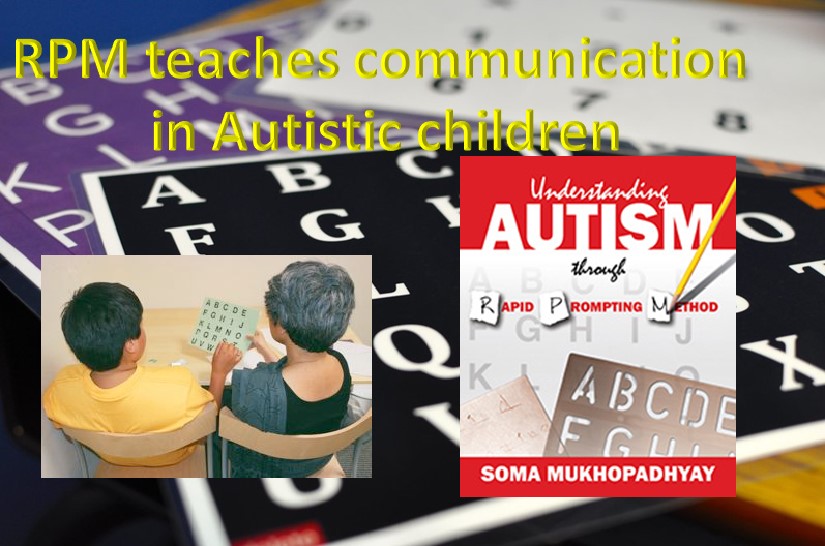
Rapid Prompting Method RPM
An Indian mother Soma Mukhopadhyay who lives in Texas, developed a technique to teach communication skills to her autistic son Tito. Soma called this technique Rapid Prompting Method or RPM. This method allowed Tito to communicate his feeling, thoughts and ideas.
In 2005, Mukhopadhyay established the Halo-Soma Institute in Austin, Texas. In 2008 CNN channel ran a program on RPM that involved constant fast paced questioning, stimulating, engaging combined with the use of low tech alphabet board for spelled communication.
Soon, the word reached out. In the life of many Parents RPM technique became part of their life (who have autistic child). Portia Iversen, a mother of an autistic child learnt Soma’s work and Soma helped Iversen’s son Dov.
Iversen’s book called ‘Strange Son‘ describes Soma’s technique and how the spelling board – RPM helped her son Dov to communicate using complex sentences.
What is RPM?
It is a low-tech approach that has a student, an instructor, paper and a pencil. It teaches child who is in autism spectrum to communicate effectively. RPM was designed based on the psychological, developmental and behavioral theories put forth by Jean Piaget and Anna Jean Ayres. It’s goal is to “establish functional independent pointing-based communication in people who are otherwise nonverbal due to severe autism or other developmental disabilities” (Wikipedia).
As per http://www.halo-soma.org “RPM is distinct from other methods as it is based upon how the brain works. The aim is to bring the student to maximum learning through the open learning channel and to elicit the best (not simply to test) out of the child to enable maximum output in that given time. As a student’s cognitive and motor proficiency increases, the sophistication of a student’s response also improves RPM prompts – a student’s independent response, without physical support. In addition to teaching letter-chart pointing, RPM also utilizes stencils and other drawing exercises to lead to independent handwriting”.
It helps children to increase interest, confidence and self-esteem. It is designed to help students to initiate responses like picking up answers, to point, to type and to write. It reveals students comprehension, academic abilities and conversational skills.
RPM is not recognized as a clinical profession and there is not much research support. However, people who want to practice, appear to be self-taught and has to participate in the workshops offered by Halo-Soma, Heather Clare of informative pointing fame or Vanderblilt Kennedy Center Angelman Program for Alphabet Therapy. If professionals want to apply for workshops they are required to submit a 10 mins video samples of the use of RPM, a resume and the reason for wanting to attend the course.
The technique may be used effectively for children who fall into autism spectrum and Fragile X syndrome, blindness, deafness, Angelman syndrome, Down syndrome, Williams syndrome, and Prader-Willi syndrome.
The other technique that helps autistic child to communicate effectively that are similar to RPM is informative pointing or alphabet therapy.
How RPM helps a child? Visit below website for more information:
http://www.halo-soma.org/learning_faqs.php#USING_RAPID_PROMPTING_METHOD
Author: Sumana Rao | Posted on: September 15, 2017
« How to calculate fruits and vegetables servings? Selena Gomez’s kidney transplant due to Kidney Lupus »






















Write a comment